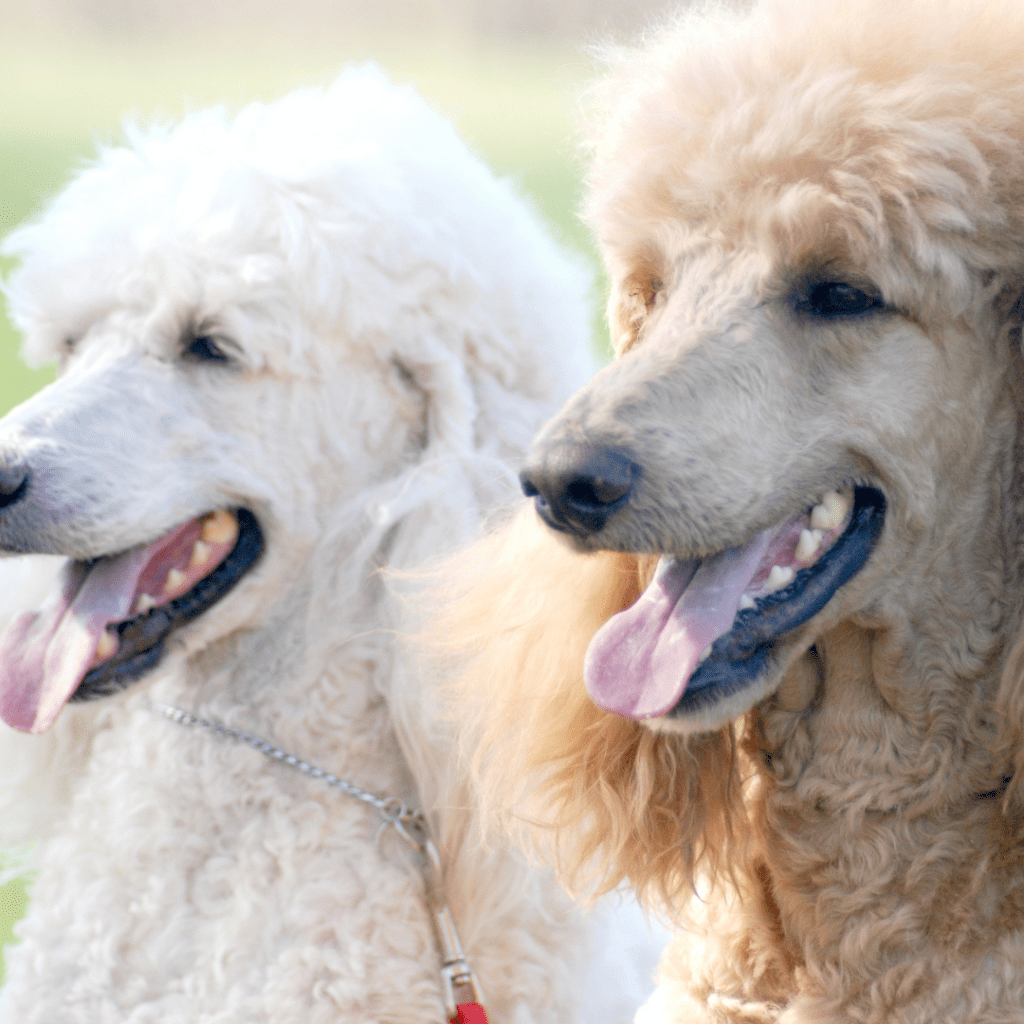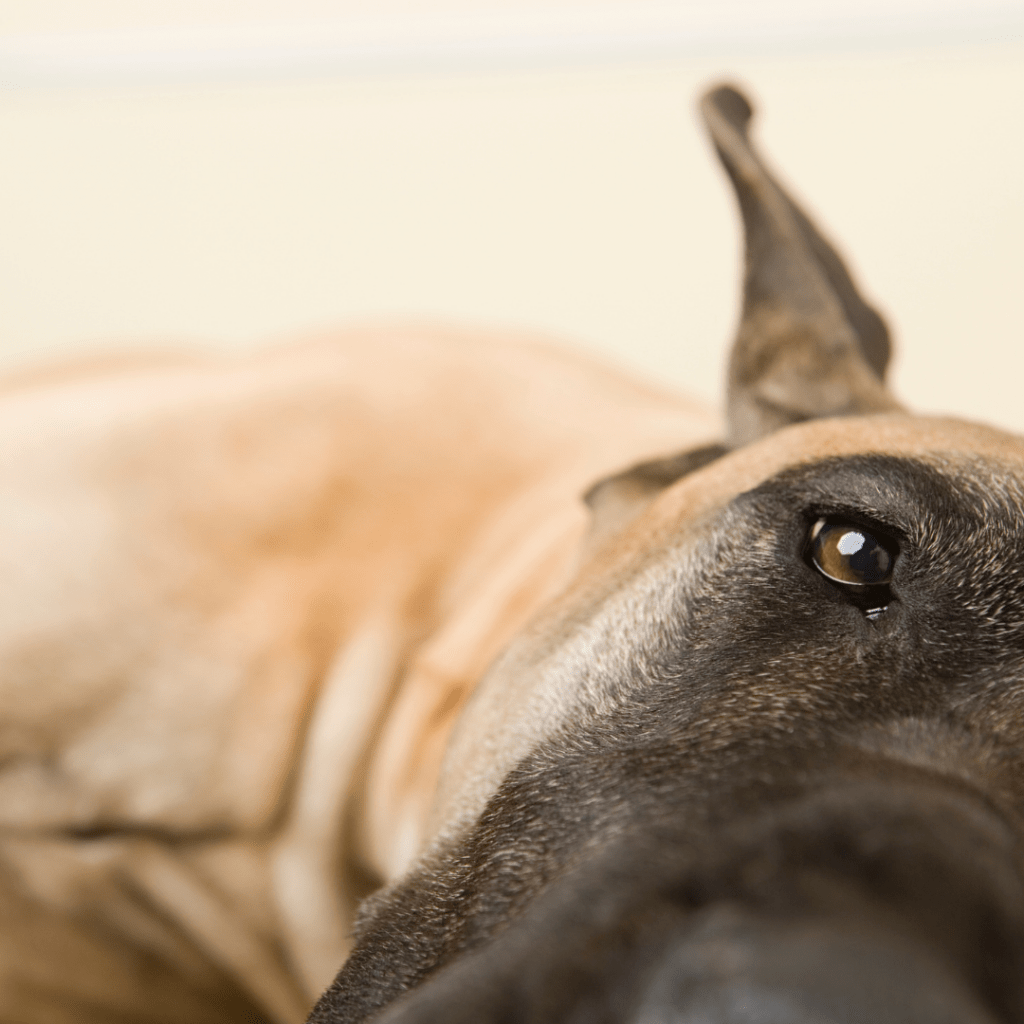Veterinary oncology is the study and treatment of cancer in dogs, cats and other exotic and domestic animals. The OVC Oncology service thrives off of a team-based approach to oncology cases. They aim to provide a good quality of life to their patients and to prolong survival. To ensure a varied and effective range of treatment options, multiple collaborations and consultations will occur within a veterinary oncology team. This team consists of a radiation oncologist, surgical oncologist and medical oncologists. Currently, the OVC Oncology service offers local treatment (surgery and radiation therapy) and systemic treatment (chemotherapy and immunotherapy). To learn more about the OVC Oncology service, please click here, and for the Institute of Comparative Cancer Investigation, click here.

Evaluating Palladia® for the Treatment of Canine Oral Melanoma
Study Investigator: Dr. Anthony Mutsaers
Graduate Student: Dr. Gabby Allergini (DVSc)
Palladia is a type of drug originally used to treat recurrent mast cell tumours in dogs. New evidence has shown that Palladia may be useful for treating other cancer types. Oral melanoma is a locally invasive and highly metastatic cancer. In some cases, even with aggressive therapy, survival times can be as little as 6 months. The use of Palladia, if other treatments have failed, or if traditional therapy is declined, may extend survival in these patients.
Inclusion criteria:
- Dogs with a confirmed diagnosis of oral melanoma through biopsy and measurable disease
- Dogs that have previously received the melanoma vaccine will still be eligible

Evaluating Blood Markers in Dogs with Mast Cell Tumours
Scientific Title: Micro RNA Profiling for Diagnosis and Prognosis in Canine Mast Cell Tumours
Study investigator: Dr Darren Wood
Graduate Student: James Mori (MSc)
Mast Cell tumours (MCT) are a type of cancer that arises from mast cells and is a relatively common diagnosis in dogs. There are many different subtypes of MCT which can impact how well dogs will respond to treatment and their overall prognosis. MicroRNA (miRNA) can be found in the blood and these small molecules regulate a number of cellular activities including cell growth, differentiation, development, and apoptosis. The use of biomarkers such as miRNA for cancer diagnosis and/or prognosis has high potential in veterinary medicine.
Inclusion criteria:
- Dogs with naturally occurring mast cell tumours undergoing standard of care surgical excision
- Dogs must not have a previous history of surgical removal with microscopic analysis, prior therapy (ie: chemotherapy or radiation) and/or active disease unrelated to the tumour

Evaluating the Use of Fluorescent Dyes in Dogs Undergoing Liver Mass Removal Surgery
Scientific Title: Evaluating the Use of Fluorescent Dyes in Dogs Undergoing Liver Mass Removal Surgery
Study Investigator: Dr. Brigitte Brisson
Graduate Student: Dr. Rachel Dobberstein (DVSc)
Dogs are prone to developing liver cancer. In humans, fluorescent dyes are used to identify liver tumours and determine appropriate tissue margins for complete surgical removal. This same technique may be used in dogs with liver tumours and as it does in people, the fluorescence imaging may guide surgeons in determining the required margins to remove the entire tumour.
Inclusion criteria:
- Dogs undergoing an open (laparotomy) abdominal surgery at OVC-HSC
- Dogs diagnosed with primary liver neoplasia or abdominal neoplastic lesions that commonly metastasize to the liver by time of diagnosis e.g. splenic HSA.
- Cancer diagnosis will be suspected based on recent (<14 days) abdominal ultrasound or abdominal CT scan at OVC-HSC

Exploring a Novel Nanoparticle Combined with Light Therapy to Treat Oral Tumours in Dogs
Scientific Title: Exploration of Nanoparticle-Enabled Image Guided Photoablation in Veterinary Patients
Study Investigator: Dr. Michelle Oblak
PORPHYSOME-enabled therapies can have an immediate impact on cancer management providing better patient outcomes. This study will evaluate the potential applications of the novel nanomedicine (PORPHYSOMES) and PDT in veterinary clinical patients with oral tumours.
This project is part of the Veterinary Medical Innovation Platform aligned with Dr Michelle Oblak’s research chair with OVC and Animal Health Partners.
Inclusion criteria:
- Dogs ≤ 60kg, with a confirmed oral tumour (any type) and interested in pursuing CT and surgery will be eligible for this study
- There will be two arms: PDT + surgery and monotherapy; these will be explained by the clinical trials team at enrollment

ON HOLD FOR RECRUITMENT – Can We Use a Mobile App to Measure Oral Tumours in Dogs?
Scientific Title: Utility and Feasibility of Mobile Device Photogrammetry to Accurately Determine Tumour Dimensions in Dogs with Oral Tumours, a Pilot Study
Study Investigators: Dr. Michelle Oblak and Dr. Christopher Pinard
An important aspect of tumour staging and prognosis is often related to tumour size. Traditionally, clinicians have relied on hand-held caliper measurements alone prior to CT to accurately obtain a baseline for their patient’s tumour and to later assess response to therapy. Incorporation of technology in the assessment of pets with cancer is important for treatment evaluation and improving follow-up including the ability to monitor disease at home, without the need to travel for recheck appointments.
Inclusion criteria:
- Dogs with oral tumours >1cm undergoing CT scans for standard of care treatment at either the Ontario Veterinary College or the Lakeshore Animal Health Partners Emergency and Specialty Hospital.

Evaluating the Use of Fluorescence Dyes in Surgery for Dogs with Pancreatic Cancer
Scientific Title: Pilot Evaluation of Near Infrared Fluorescence Imaging for Intraoperative Identification of Canine Insulinoma and Their Metastasis
Study Investigator: Dr. Michelle Oblak
Making tumours glow-in-the-dark, using a combination of near-infrared fluorescence imaging (NIRF) and a fluorescent dye, Indocyanine Green (ICG), has been used in several veterinary applications – many in surgical oncology clinical trials at OVC! During surgery, pancreatic masses in dogs can be challenging to remove as they are often quite small and difficult to see on gross visualization or via traditional imaging methods. Using NIRF-ICG for surgical guidance has the potential to improve patient outcomes and enable better visualization of the pancreatic mass(es) and metastatic sites.
Inclusion criteria:
- Dogs that are diagnosed with a pancreatic mass and scheduled for exploratory laparotomy

Exploring a Novel Diagnostic and Treatment Technique in Combination With Surgery for Thyroid Tumours in Dogs
Scientific Title: Exploration of Nanoparticle-Enabled Image Guided Photoablation in Veterinary Patients
Study Investigator: Dr. Michelle Oblak
PORPHYSOME-enabled therapies can have an immediate impact on cancer management providing better patient outcomes. This study will evaluate the potential applications of the novel nanomedicine (PORPHYSOMES) and PDT in veterinary clinical patients with thyroid tumours.
This project is part of the Veterinary Medical Innovation Platform aligned with Dr Michelle Oblak’s research chair with OVC and Animal Health Partners.
Inclusion criteria:
- Dogs with a confirmed freely moveable thyroid tumour interested in pursuing surgery are eligible

Investigating Biomarkers of Metronomic Chemotherapy Treatment in Dogs with Soft Tissue Sarcoma
Scientific Title: Investigating Biomarkers for Metronomic Cyclophosphamide Treatment of Canine Soft Tissue Sarcoma Using Functional Imaging, Tissue, and Blood Analysis
Study Investigator: Dr. Anthony Mutsaers
Metronomic chemotherapy (LDM) is a new form of treatment, defined as the low-dose daily administration of chemotherapy drugs. We do not know exactly how these drugs work (changes that occur inside the tumour) or the most optimal dose and schedule for STS treatment.
Inclusion criteria:
- Dogs with a confirmed diagnosis of soft tissue sarcoma with gross disease

Investigating Carboplatin Chemotherapy as a Post-Surgical Treatment for Splenic Hemangiosarcoma in Dogs
Scientific Title: Investigating Carboplatin Chemotherapy As Adjuvant Treatment For Canine Splenic Hemangiosarcoma
Study Investigator: Dr. Anthony Mutsaers
Graduate Student: Dr. Jacqueline Bowal (DVSc)
Even with standard of care treatments, Doxorubicin
chemotherapy and tumour resection, HSA has a very guarded prognosis. Carboplatin is another common chemotherapy agent and has been shown to have a similar effect and an improved tolerability in dogs diagnosed with Osteosarcoma, when compared to Doxorubicin.
Inclusion criteria:
- Confirmed diagnosis of splenic hemangiosarcoma
- Must have already undergone splenectomy
- No evidence of metastasis
- No previous chemotherapy treatment

Ontario Veterinary College Veterinary Biobank
Formerly the Companion Animal (Cats and Dogs) Tumour Sample Bank
Study Investigator: Drs. Michelle Oblak and Geoff Wood
Biobanks are important for research that connects animal and human medicine, narrowing the knowledge gap between these two fields. The Ontario Veterinary College (OVC) Veterinary Biobank is part of the Institute for Comparative Cancer Investigation. Since 2009, over 30,000 samples have been gathered from over 2000 pets with the goal to improve the health’s of our pets.
Our biobank and its repository of samples are essential to our understanding of the disease processes, finding better treatments and diagnostic methods as well as predicting how individuals may respond to treatment.
Inclusion criteria:
- Animals visiting the OVC Health Sciences Centre or Smith Lane Animal Hospital undergoing surgery and/or sample collection
- Participating animals can be healthy or diagnosed with a disease

Analyzing Lymph Node Spread in Dogs Undergoing Surgery for Thyroid Tumours
Scientific Title: Evaluation of Regional Lymph Node Metastasis in Canine Thyroid Carcinoma
Study Investigator: Dr. Michelle Oblak
Thyroid tumours are relatively uncommon in dogs, however about 90% of these tumours are either malignant carcinomas or adenocarcinomas. Using special stains, tissues once surgically removed can be categorized into subtypes: follicular, medullary, compact and mixed. The subtype may affect prognosis including the frequency and pattern of thyroid tumours to spread to lymph nodes.
Inclusion criteria:
- Dogs with a confirmed diagnosis of a thyroid tumour undergoing staging and surgery

Evaluating Outcomes Associated with Acute Myeloid Leukemia in Dogs
Scientific Title: It’s All in the Genes – The Mutational Landscape of Acute Myeloid Leukemia in Dogs
Study Investigator: Dr. Dorothee Bienzle
If we can better understand the different types and genetic mutations associated with AML, we will be able to provide a more accurate prognosis for dogs diagnosed with AML in the future.
Inclusion criteria:
- Dogs with a diagnosis of acute myeloid leukemia or myelodysplastic syndrome

Evaluating the Clinical Outcome of Dogs Diagnosed with T-cell Lymphoma
Scientific Title: Prognostication of Canine T-cell Lymphoma
Study Investigator: Dr. Dorothee Bienzle
T-cell lymphoma is rare and most dogs with T-cell lymphoma are considered to have a poor prognosis. Recently, there has been evidence that some T-cell lymphomas have a better prognosis than previously described, but we don’t fully understand this variability which is crucial for accurate prognoses.
Inclusion criteria:
- Dogs with a cytology or histopathology diagnosis of lymphoma who will be treated with chemotherapy

Evaluating the Use of Fluorescent Dyes in Surgery to Improve Lymph Node Staging in Dogs with Lung Cancer
Scientific Title: Evaluation of Sentinel Lymph Node Mapping in Dogs with Lung Tumours using CT Lymphography and Intraoperative Indocyanine Green
Study Investigator: Dr. Michelle Oblak
By developing new protocols, we can ensure accurate evaluation of the most important lymph node(s) to make better follow-up and treatment recommendations. This will help to improve patient treatments and outcomes for dogs diagnosed with lung tumours, as well as dogs and cats with other solid tumour types in the future. The team is working closely with human surgeons on this translational project.
Inclusion criteria:
- Dogs with a single lung tumour (less than 5cm) interested in pursuing CT scan and surgery

Comparing the Use of Fluorescent Dyes in Surgery to Previously Reported Methods for Improving Lymph Node Staging in Dogs with Oral Cancer
Scientific Title: Evaluation of Agreement Between Computed Tomography Lymphangiography and The Combination of Methylene Blue and Indocyanine Green for Sentinel Lymph Node Mapping in Dogs with Oral Tumours
Study Investigator: Dr. Michelle Oblak
Development of imaging and intraoperative protocols could help decrease the number of lymph nodes surgically removed, in addition to ensuring accurate evaluation of the most important lymph node(s) for making follow-up treatment recommendations improving patient prognosis and outcomes for dogs diagnosed with oral tumours.
Inclusion criteria:
- Dogs with a diagnosed oral tumour and interested in pursuing CT & Surgery

Gastrointestinal Lesions And Bleeding in Dogs With Mast Cell Tumours
Study Investigator: Dr. Paul Woods
Mast cells are involved in the inflammatory response including the release of histamine, which increases
stomach acidity. Using a new, non-invasive technology (pill cameras), we can obtain images of a dog’s GI tract to determine the frequency of GI lesions and better understand the relationship between GI lesions and MCT, in order to predict and treat dogs with GI lesions due to MCT in the future.
Inclusion criteria:
- Dogs (> 6 kg) with naturally occurring mast cell tumour disease

Evaluating a Non-Invasive Heat Therapy for the Treatment of Bone Cancer in Dogs
Scientific Title: Magnetic Resonance (MRI)-Guided High Intensity Focused Ultrasound (HIFU) to Treat Limb Osteosarcoma in Dogs: a Pilot Study
Study Investigator: Dr. Brigitte Brisson
Bone cancer or osteosarcoma (OSA) is a common, highly aggressive cancer that can affect the long bones of large breed dogs. Current standard of care therapy consists of limb amputation plus chemotherapy. High-intensity focused ultrasound (HIFU) delivers ultrasonic energy that heats a target tissue above 60°C to produce tissue destruction without harming overlying and adjacent tissues within the path of the heat beam. It has been proposed that HIFU could be an alternative, non-surgical treatment which could provide an opportunity for the immune system to mount an immunity against OSA and could possibly reduce the frequency and/or speed of occurrence of metastasis.
Inclusion criteria:
- Dogs with a confirmed diagnosis of osteosarcoma with no evidence of metastases
- No previous surgical/radiation treatment for treatment of OSA
- Prior chemotherapy and/or bisphosphonate treatment will be evaluated on a case-by-case basis


